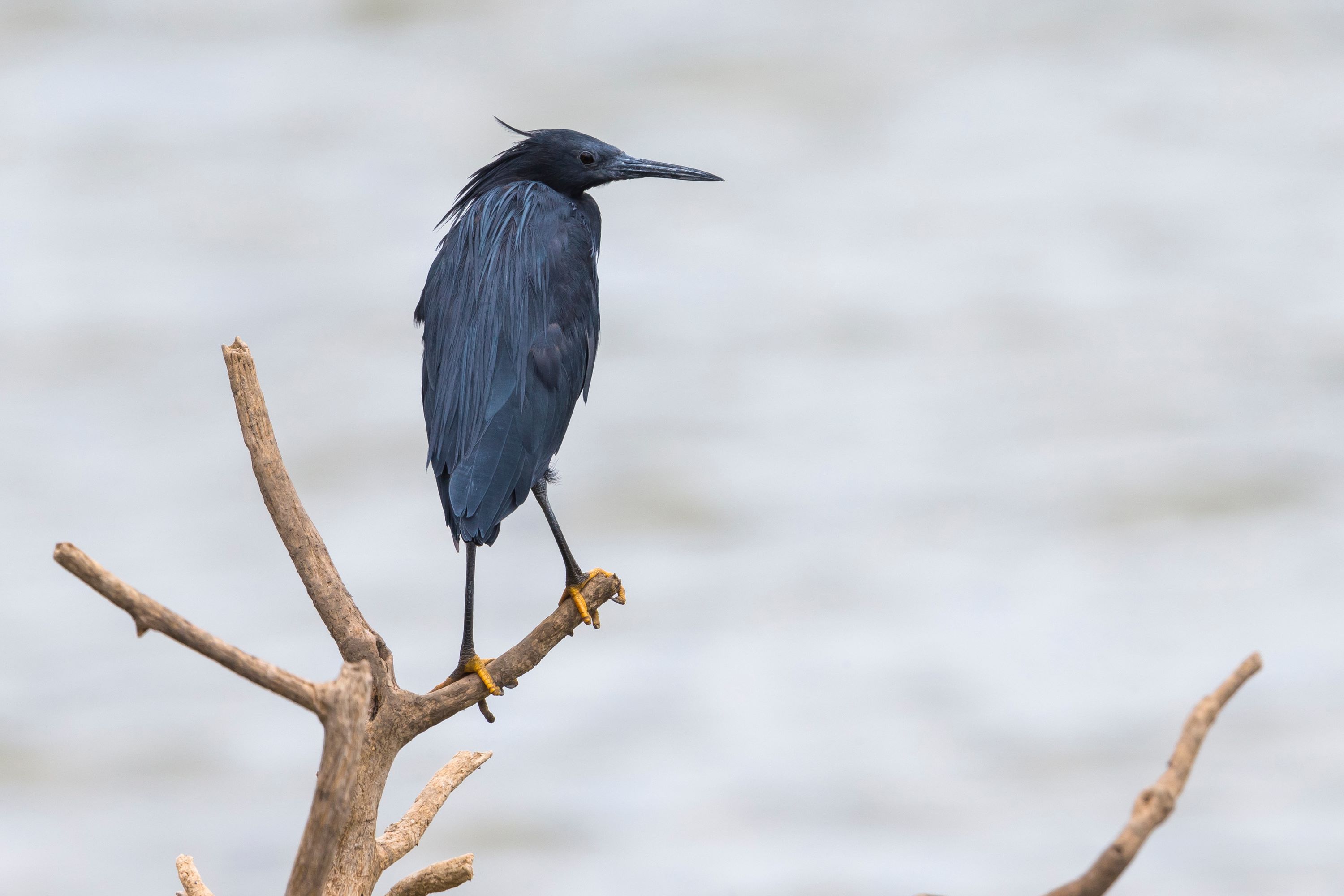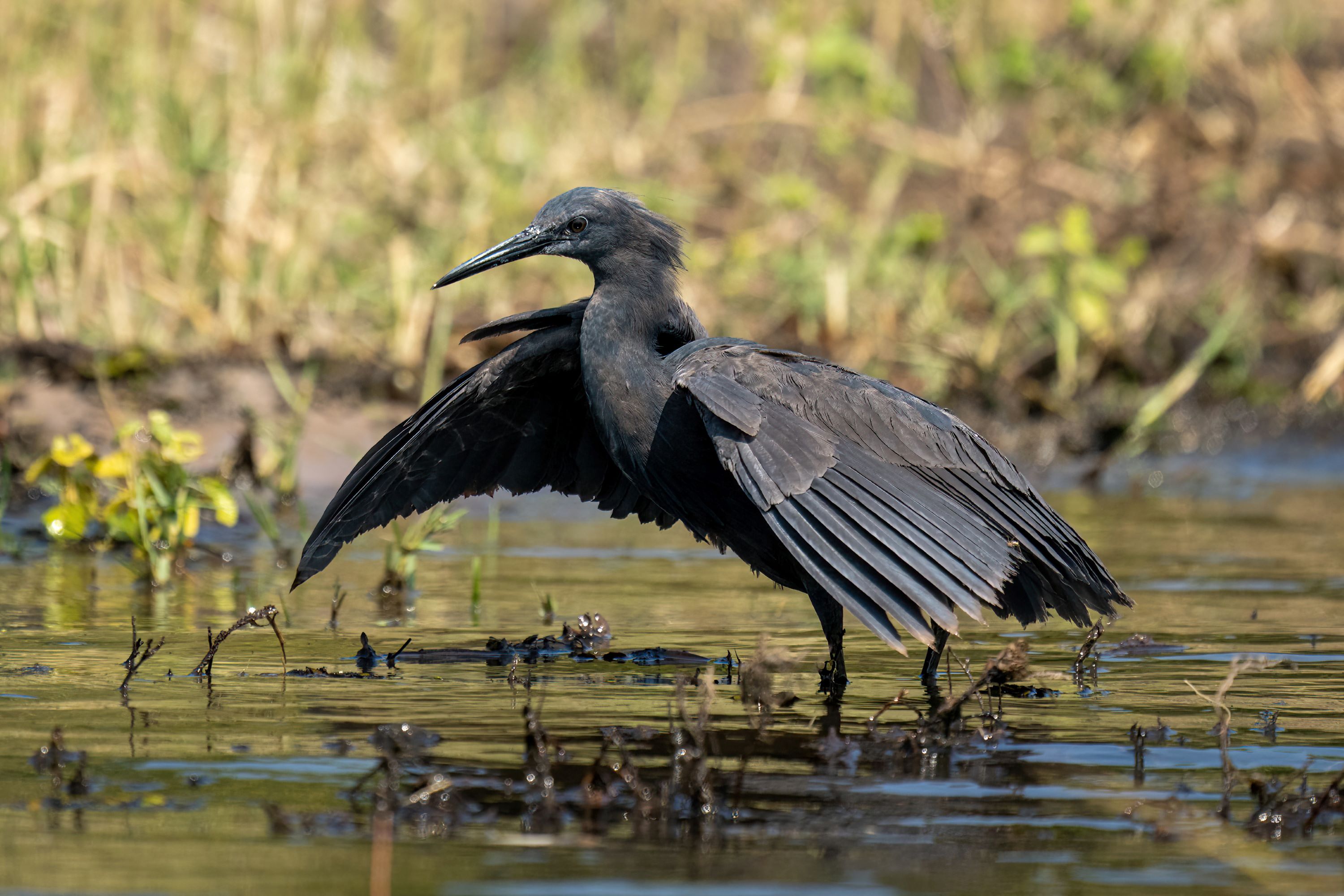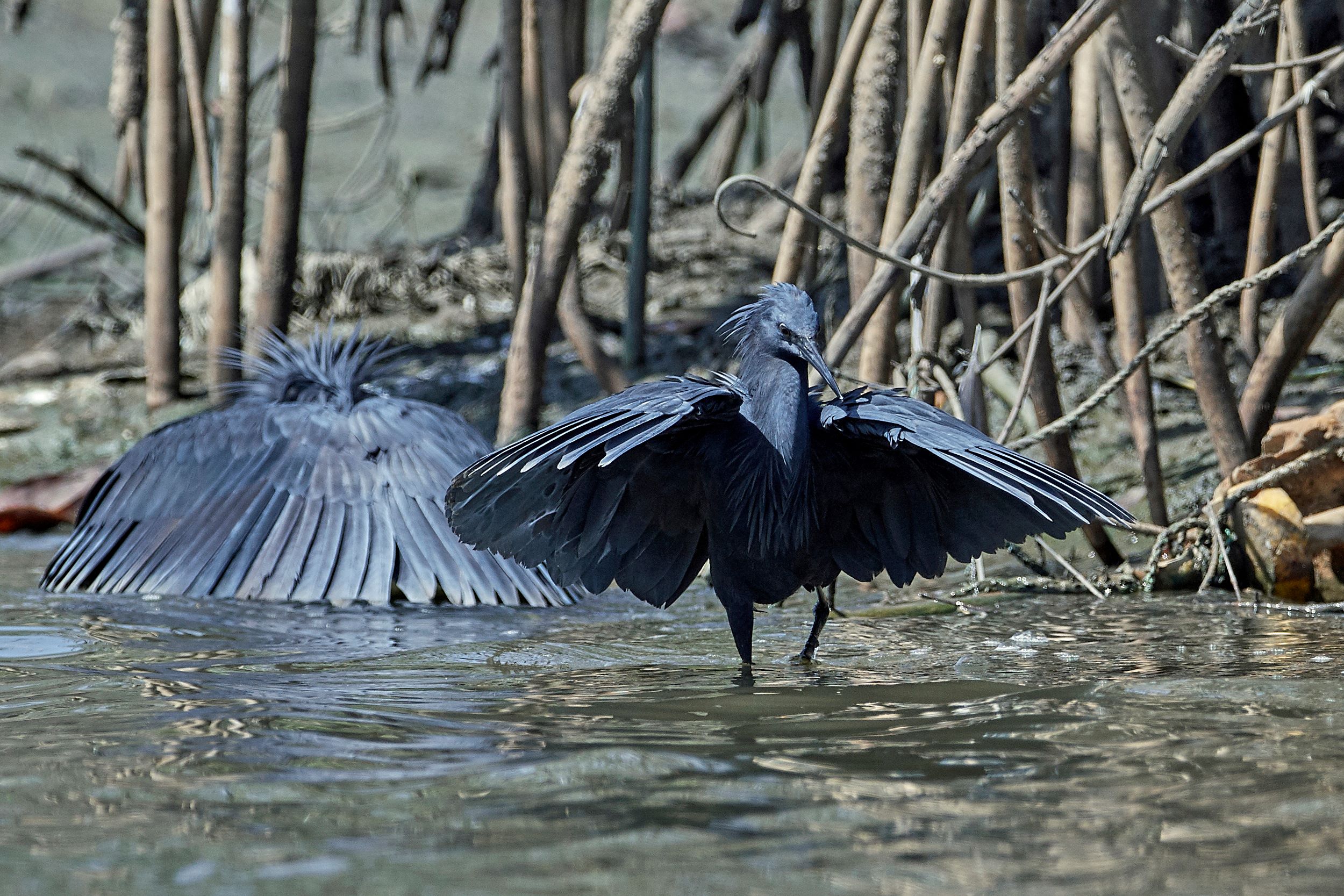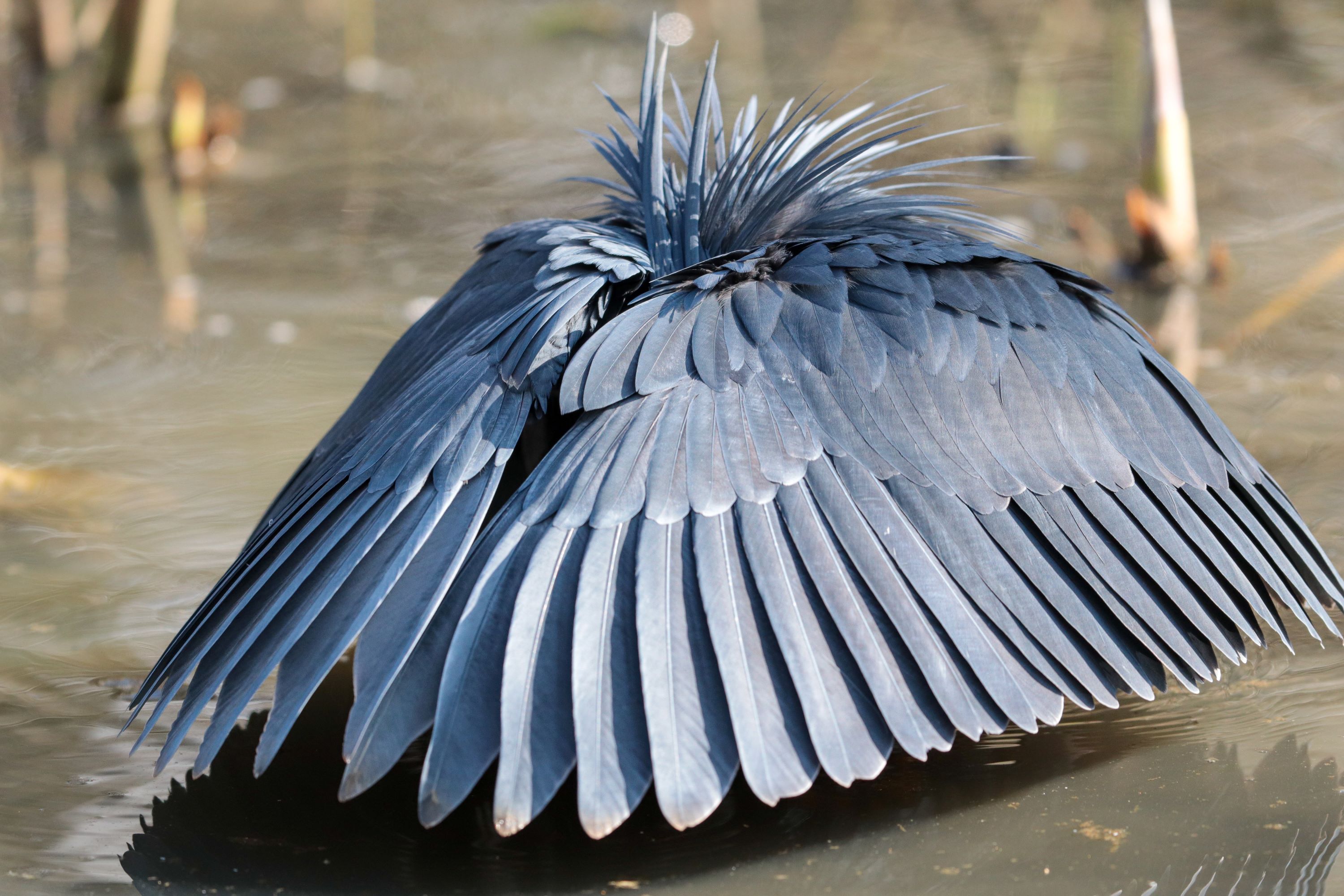
The Black Heron: The Unique Umbrella Bird of Africa
Introduction to the Black Heron
The Black Heron, scientifically known as Egretta ardesiaca, is an intriguing and distinctive bird species predominantly found in sub-Saharan Africa. Known for its unique hunting method and striking all-black plumage, the Black Heron stands out among the heron family, Ardeidae.
Physical Description
The Black Heron is medium-sized, measuring approximately 42-66 cm in length. Its plumage is entirely black with a slight bluish-green sheen, providing a sleek and uniform appearance. The bird features a slender body, a long neck, and legs, with a sharp, pointed bill, typical of herons.
Habitat and Distribution
This heron inhabits a wide range of freshwater habitats, including shallow lakes, rivers, marshes, and flooded plains. It is commonly found in regions of sub-Saharan Africa, where it prefers areas with abundant aquatic life for feeding.

Behavior and Lifestyle
The Black Heron is known for its solitary nature, often seen foraging alone. It is most active during the day, especially in the early morning and late afternoon. One of the most notable behaviors of the Black Heron is its unique hunting technique, known as canopy feeding.
Feeding Habits
It feeds primarily on small fish, amphibians, and aquatic invertebrates. The Black Heron employs an unusual method of foraging called the 'umbrella technique,' where it spreads its wings forward, creating a canopy over its head to shade the water and attract prey.
Breeding and Nesting Habits
Breeding typically occurs during the rainy season. The Black Heron nests in colonies, often alongside other heron species. Nests are built in trees or reeds near water bodies, using twigs and vegetation to form a platform.

Egg Laying and Incubation
The female usually lays 2 to 4 pale blue eggs. Both parents take turns incubating the eggs, which hatch after about 21 to 25 days. The elevated location of the nests offers some protection against predators.
Chick Rearing and Parental Care
The chicks are altricial and require significant care from the parents. Both parents are involved in feeding the chicks, which fledge the nest in about 5 to 6 weeks but may stay nearby for additional parental support.
Vocalizations and Communication
The Black Heron is relatively quiet but can produce a range of sounds, especially during the breeding season. These include croaks and soft calls used for communication within the colony and with its mate.

Conservation Status
The Black Heron is currently listed as Least Concern by the IUCN. However, like many wetland species, it faces threats from habitat loss and environmental changes, emphasizing the need for wetland conservation.
Similar Species and Taxonomy
Part of the order Pelecaniformes, the Black Heron is closely related to other members of the genus Egretta, such as the Little Egret and Snowy Egret. However, it is easily distinguishable by its unique all-black plumage and hunting behavior.
The Black Heron in Utah
The Black Heron is not found in Utah or North America, as it is native to sub-Saharan Africa. In Utah, birdwatchers can observe other heron species in local wetland habitats.
Conclusion
The Black Heron, Egretta ardesiaca, is a unique and fascinating bird, both in appearance and behavior. Its canopy feeding technique is a remarkable display of adaptation and intelligence. Observing the Black Heron in its natural habitat offers a glimpse into the diverse and rich avian life of Africa's wetlands, underscoring the importance of preserving these habitats for the survival of this and countless other species.